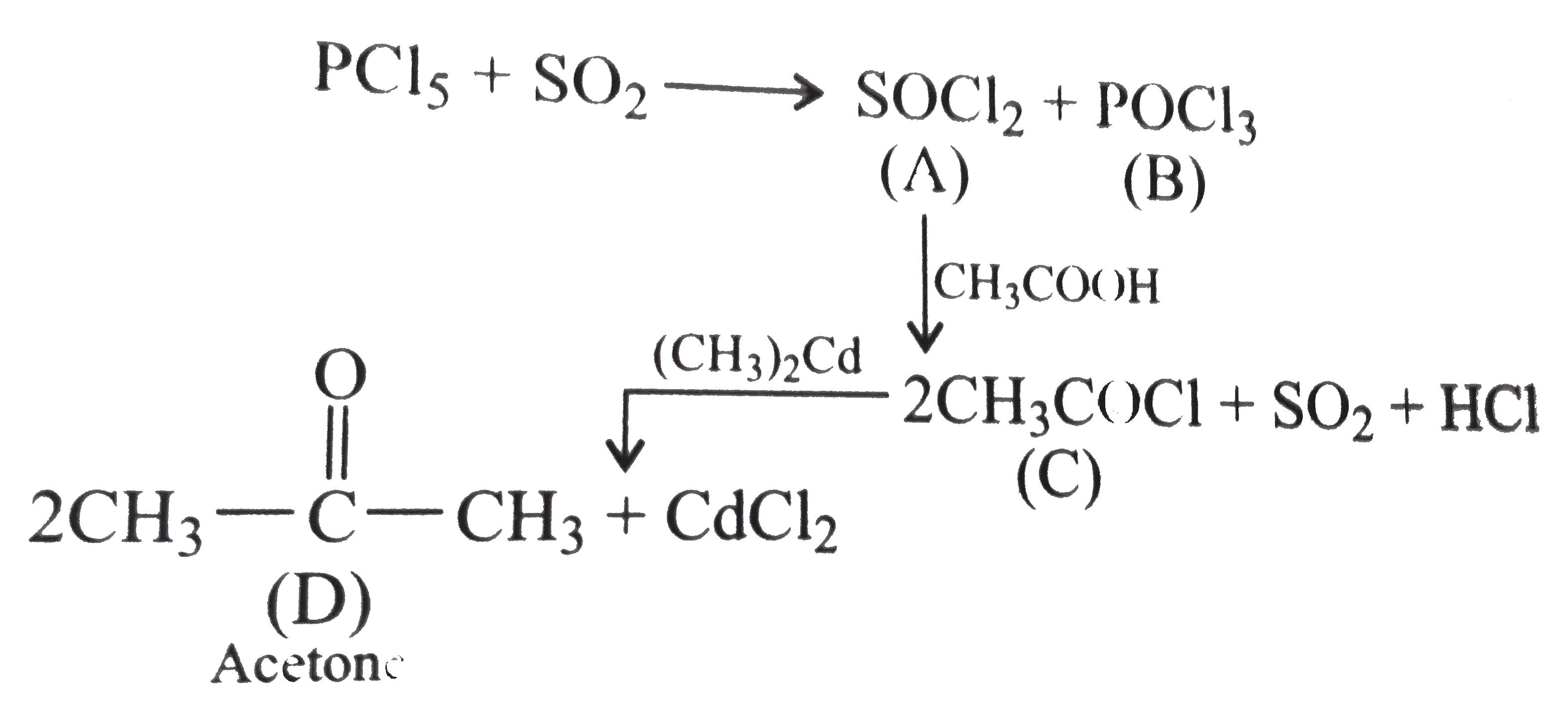In the following reactions, identify the compounds A,B,C and D.
(i) PCl5+SO2→A+B
(ii) A+MeCOOH→C+SO2+HCl
(iii) 2C+Me2Cd→2D+CdCl2.
 .
.
Topper's Solved these Questions
- BOOK - CENGAGE CHEMISTRYCHAPTER - CARBOXYLIC ACIDS AND THEIR DERIVATIVESEXERCISE - Exercises Archives (True/False)2videos
CARBOXYLIC ACIDS AND THEIR DERIVATIVES
- BOOK - CENGAGE CHEMISTRYCHAPTER - BIOMOLECULES, POLYMERS AND CHEMISTRY IN EVERYDAY LIFEEXERCISE - QUESTION BANK8videos
BIOMOLECULES, POLYMERS AND CHEMISTRY IN EVERYDAY LIFE
- BOOK - CENGAGE CHEMISTRYCHAPTER - CHEMICAL KINETICSEXERCISE - Archives Subjective23videos
CHEMICAL KINETICS
Similar Questions
Knowledge Check
- Question 1 - Select One
In the following sequence of recation, identify the compounds (A), (B), (C ) and (D):
NSolutiona2CO3SO2−−→(A)Na2CO3−−−−→(B)S−−→Heat(C)AgNO3−−−→(D)ANaSO3.NaHSO3.Na2s.Ag2SBNaHSO3,Na2SO3,Na2S2O3,Ag2SCNaHSO3,Na2SO4,Na2S,Ag2ODNa2SO3,Na2SO4,Na2S2O3,Ag - Question 2 - Select One
Given the following reaction involving A,B,C and D
(i) C+B+→C++B
(ii) A−+D→ NO reaction
(iii) C++A→ NO reaction
(iv) D+B+→D++B
the correct arrangement of A,B,C,D in the order of their decreasing ability as reducing agentAd>b>c>aBa>c>d>bCc>a>b>dDc>a>d>b - Question 3 - Select One
The standard reduction potential for half reactions for four different elements. A,B,C and D are:
(i) A2+2e−→2A−,E∘=+2.85V
(ii) B2+2e−→2B−,E∘=+1.36V
(iii) C2+2e−→2C−,E∘=+1.06V
(iv) D2+2e−→2D−,E∘=+0.53V
The strongest oxidising reducing agents smong these :AWould be A and D respectivelyBWould be D and A respectivelyCWould be B and C respectivelyDCannot be ascertained from the given data as the species being subjected to ioxidation or reduction have not been indicated
How many of the following reaction yield POCl3 ?
(i)PCl3+O2→(ii)PCl5+CO2→(iii)PCl5+CH3COOH→(iv)PCl5+H3BO3→(v)PCl3+SO2Cl2→(vi)P4O10+NaCl→(vii)PCl5+H2O→(viii)PCl5+SO2→(ix)PCl3+SO3→View SolutionOn the basis of given reactions,the correct order of increasing oxidising of A,B,C & D is. [(a)A−+B→A+B− , (b) C+D−→noreaction , (c) C−+B→noreaction, (d) D+A−→D−+A]
View SolutionComplete the following reactions :
a. Et2NH+PhSO2Cl→
c. PhCH2NH2+HCOOHΔ−−→
c. PhNH2+PhCHO→.View SolutionComplete the following reactions:
a. 2Me3C−−Br Ag2CO3−−−−→Δ (A)
b. MeOH+MeCH=O+HCI(g)→(B)
c. MeOH+H2C=O+HCI(g)→(C)
d. View Solution
View SolutionConsider the following reactions :
(i) C2O2−4→CO2
(ii) SO2−4→SO2−3
(iii) MnO2−4→MnO−4
(iv) Fe3+→Fe2+
Choose the correct answer -View Solution

